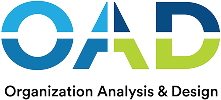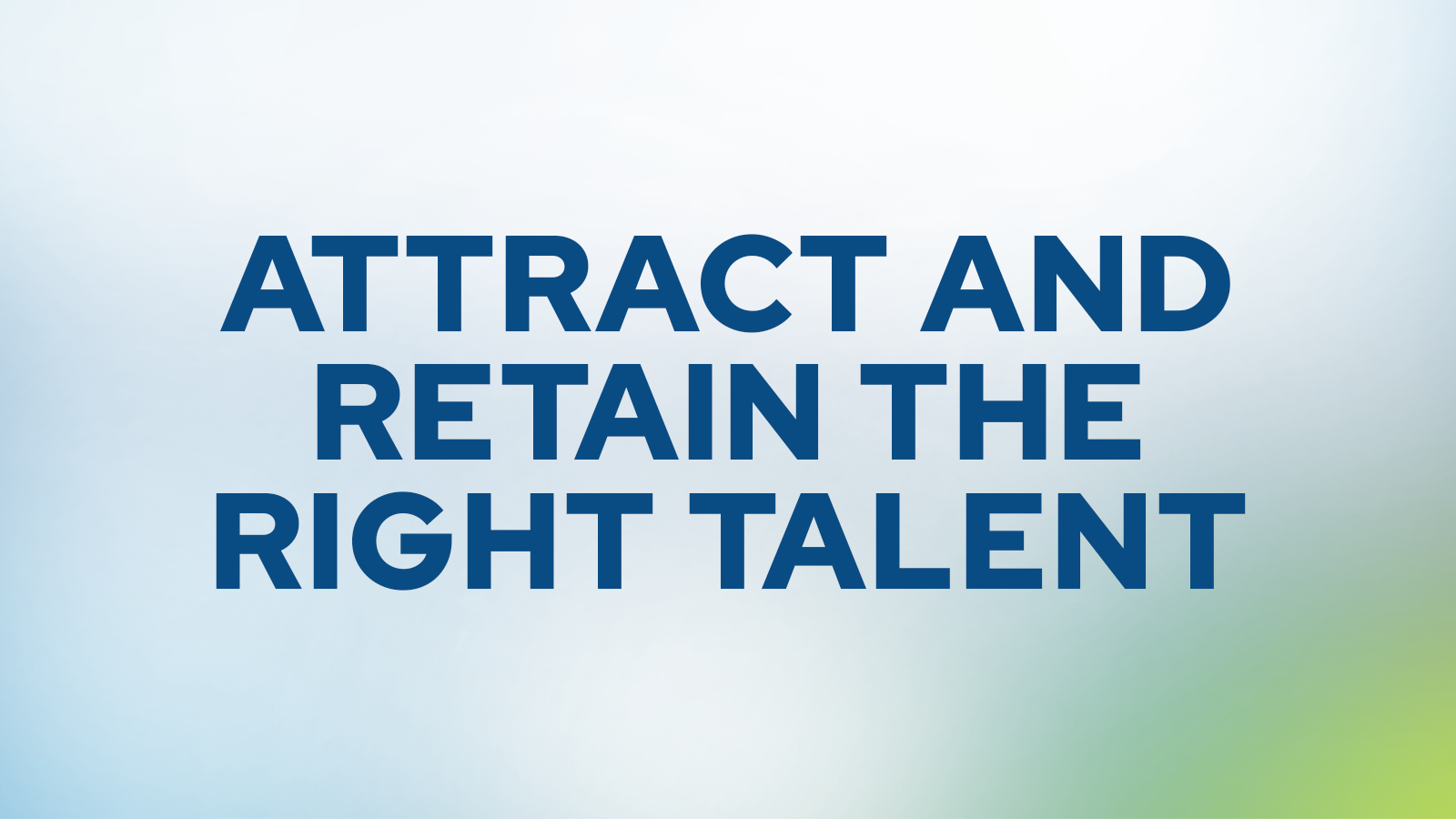Hiring the right people is the single biggest challenge for small businesses — and the cost of getting it wrong can sink growth before it starts. The good news? Today’s hiring software for small business combines smart automation with science-backed insights, helping owners attract stronger candidates, streamline the recruitment process, and make better long-term decisions.
Table of Contents
- Hiring Software for Small Business: Overcoming Hiring Challenges
- What Is Hiring Software for Small Business?
- Core Features Every Small Business Should Look For
- Best Hiring Software for Small Businesses in 2025
- Integrating Hiring Software into Your Recruitment Process
- Best Practices for Using Hiring Software Effectively
- Ensuring Fair and Inclusive Hiring
- Advanced HR Tech Trends for Small Businesses
- Case Study: Scaling Hiring with Science
- How OAD Strengthens Small Business Hiring
- Conclusion: Hire Smarter, Not Just Faster
- Ready to See OAD in Action?
Hiring Software for Small Business: Overcoming Hiring Challenges
Even the most passionate founders and small business owners know that hiring isn’t simple. Unlike large enterprises with dedicated HR departments, small businesses often rely on one or two people — sometimes the owner themselves — to manage job postings, candidate communication, and interview scheduling. Without structured hiring processes and hiring workflows, the process can become disorganized and inefficient.
The hiring team in small businesses is often just one or two people, which is a stark contrast to larger organizations with more resources. This makes it even more challenging to juggle recruitment tasks and can lead to a process that feels fragmented, rushed, and costly when mistakes happen.
Limited Resources vs. Enterprise HR Departments
Large corporations can throw entire recruiting teams, advanced ATS platforms, and employer branding campaigns at their hiring needs. In contrast, small businesses juggle recruitment alongside day-to-day operations, typically relying on in house recruiters to manage the process. A single job opening might pull time away from customer service, sales, or operations — creating a ripple effect that slows growth.
The Cost of a Bad Hire
According to SHRM, the average cost of a bad hire can be up to five times the employee’s salary once training, lost productivity, and rehiring are factored in. For a 20-person company, one poor cultural fit doesn’t just impact workflow — it can disrupt the entire team dynamic. In small teams, every employee matters (especially in a small team where each role is critical), making retention just as important as recruitment.
Common Bottlenecks in the Hiring Process
From job postings scattered across different boards to interview scheduling conflicts, small businesses face multiple bottlenecks that drag out hiring efforts. Delayed candidate communication can cause top talent to drop out of the process, while unclear job descriptions attract unqualified applicants. Without structured hiring software, these small inefficiencies compound — leading to missed opportunities in competitive labor markets.
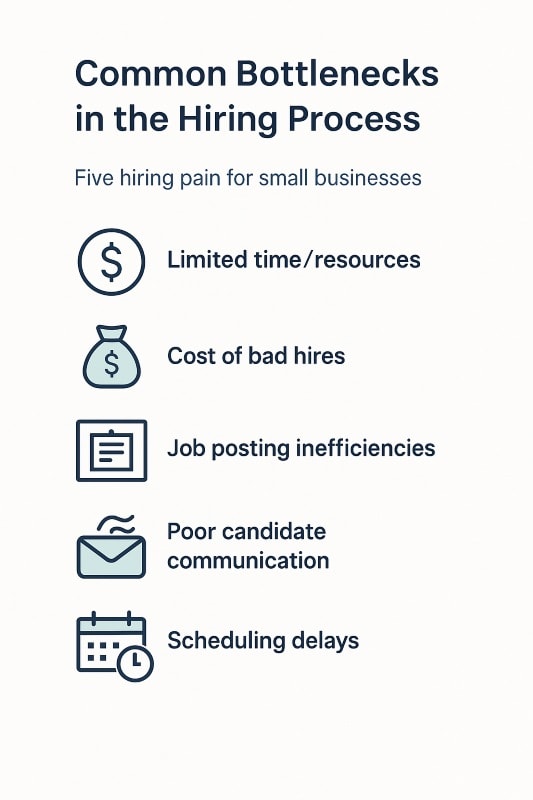
What Is Hiring Software for Small Business?
Hiring software for small business refers to digital platforms designed to simplify recruitment. At its core, this includes recruitment software and applicant tracking systems (ATS) that help small teams manage job postings, resumes, interviews, and candidate communications — all in one place. These platforms serve as a comprehensive recruitment solution for small businesses, offering scalable and customizable tools to support every stage of the hiring process. Instead of juggling email chains, spreadsheets, and job boards, small businesses can streamline the entire hiring pipeline with a single solution.
Recruitment Software vs. Applicant Tracking Systems
Although the terms are often used interchangeably, there’s a distinction. Recruitment software is a broader category that can include sourcing tools, job boards, and candidate communication platforms. An applicant tracking system (ATS), on the other hand, is a structured tool for moving candidates through the stages of the hiring process — from application to offer. Many modern hiring platforms combine both, giving small businesses the power of an ATS with the flexibility of recruiting software, effectively serving as a comprehensive recruitment tool.
Small Business vs. Enterprise HR Tech
Enterprise-level HR software often comes with complex features designed for companies with thousands of employees. Small businesses, however, need solutions that are lighter, more cost-efficient, and easier to use without extensive training. Solutions for smaller businesses are specifically designed for ease of use and affordability, making them ideal for organizations with minimal recruitment needs. For example, where an enterprise might invest in a fully customizable HR suite, a 25-person company benefits more from a simple, user-friendly tool that integrates with existing workflows.
Core Benefits of Hiring Software
The benefits extend far beyond convenience. Hiring software reduces time-to-hire, improves candidate experience, and provides data-driven insights into recruitment metrics. For small teams, the ability to automate resume parsing, schedule interviews seamlessly, and maintain clear candidate communication can mean the difference between losing top talent and closing the right hire quickly.
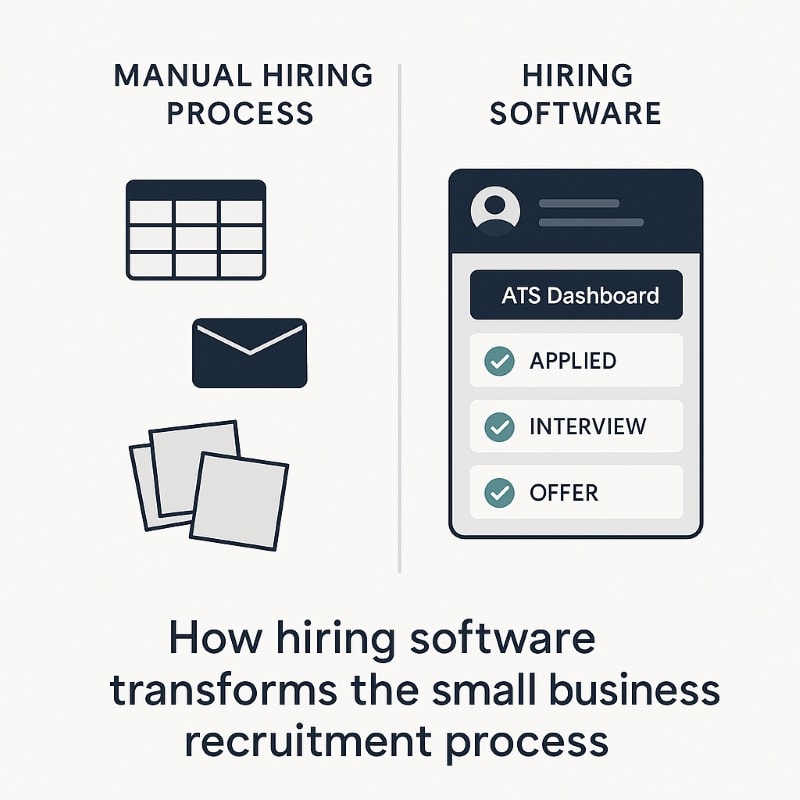
Core Features Every Small Business Should Look For
Not every hiring platform is created equal. The best recruitment software offers the most effective and feature-rich solutions for small businesses, helping them streamline hiring and build stronger teams. The best hiring software for small businesses includes features that save time, improve candidate communication, and help hiring managers make better decisions. Here are the tools and functions that matter most:
Job Boards and Job Postings
A strong hiring platform should let you publish job ads to multiple boards — Indeed, LinkedIn, ZipRecruiter, and niche industry sites — and efficiently post jobs across these platforms with a single click. This not only saves time but ensures wider visibility. Customizable job description templates can also help small business owners write clear, consistent postings without starting from scratch every time.
Resume Parsing & Candidate Sourcing
Resume parsing tools automatically extract relevant skills, experience, and keywords from applications, cutting down manual review time. Candidate sourcing features can pull potential applicants from existing talent pools or career pages, as well as source candidates from multiple platforms such as social media and professional networks, ensuring small businesses aren’t always starting from zero when a new job opening appears.
Applicant Tracking System (ATS) Basics
An applicant tracking system (ATS) is the backbone of most hiring software, enabling efficient management and tracking of multiple job openings. It organizes applications into stages — applied, interviewed, offered, hired — and provides visibility into the entire hiring pipeline. For small teams, this replaces the chaos of email chains with a structured, user-friendly workflow.
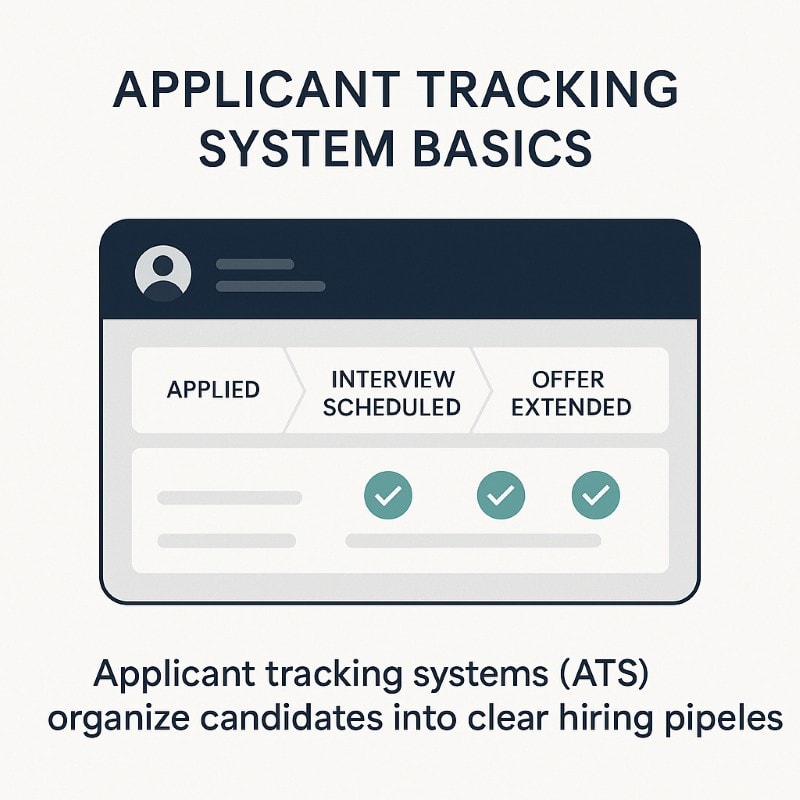
Candidate Communication Tools
One of the top reasons candidates drop out of a hiring process is poor communication. Candidate communication tools — automated emails, SMS updates, and collaborative hiring notes — help ensure timely responses. These features also allow hiring managers to maintain professionalism and consistency across every interaction. Some platforms also generate candidate summaries, enabling hiring managers to quickly review applicant information and communicate more effectively with their teams.
Interview Scheduling Features
Interview scheduling is often where small businesses lose valuable time, making an interview scheduling feature essential for streamlining the process. Platforms with built-in scheduling tools sync with calendars, send automatic reminders, and allow candidates to pick times that work best. This eliminates back-and-forth emails and ensures a smoother experience for both hiring teams and applicants.
Career Pages & Employer Branding
A company’s career page is often a candidate’s first impression. Hiring software with customizable career page features, including the option to create a custom career page as an add-on or premium feature, helps small businesses showcase their values, culture, and open roles. Beyond aesthetics, this is an employer branding opportunity — a chance to differentiate your small business from larger competitors by highlighting culture and mission.
Evaluation Tools & Recruitment Metrics
Data is a critical advantage for small businesses competing for talent. Evaluation tools such as skills assessments, structured interview scorecards, and recruitment metrics dashboards provide clarity. Instead of guessing, hiring managers can track time-to-hire, quality of hire, and candidate experience — ensuring every decision is backed by measurable insight.
The Science of Better Hiring Decisions
Hiring isn’t just about filling a position — it’s about predicting whether a candidate will succeed, grow, and stay. For small businesses, where each employee has an outsized impact, making the wrong call can stall growth and drain resources. Yet many hiring decisions are still based on gut instinct rather than data.
Why “Gut Feel” Hiring Fails Small Businesses
Relying on intuition might feel natural, but research shows it’s unreliable. A landmark study in the American Psychologist journal found that structured, data-driven hiring methods are nearly twice as effective as unstructured interviews in predicting job success. For small businesses, this means gut-feel hiring not only risks bias but also reduces the chance of securing the right fit.
The Role of Behavioral Data
Science-backed hiring software goes beyond resumes and skills. Behavioral assessments, like those developed by OAD, evaluate traits such as communication style, adaptability, and motivation. These insights reveal whether a candidate will thrive in a specific role and mesh with company culture — something no job description or resume can fully capture. By integrating behavioral data, small businesses reduce turnover and increase long-term employee engagement.
Leadership Insights on Hiring
Some of the world’s most successful leaders understand the importance of structured hiring. Jeff Bezos famously introduced Amazon’s “bar raiser” program, ensuring every hire met a standard higher than the last. Elon Musk has emphasized hiring people with problem-solving ability over flashy credentials. Warren Buffett often notes that integrity, intelligence, and energy are the non-negotiables in talent.
The common thread? They rely on frameworks and consistent standards rather than intuition alone. OAD’s assessments bring that same level of rigor to small businesses, equipping owners and HR teams with data-driven clarity in every hiring decision.
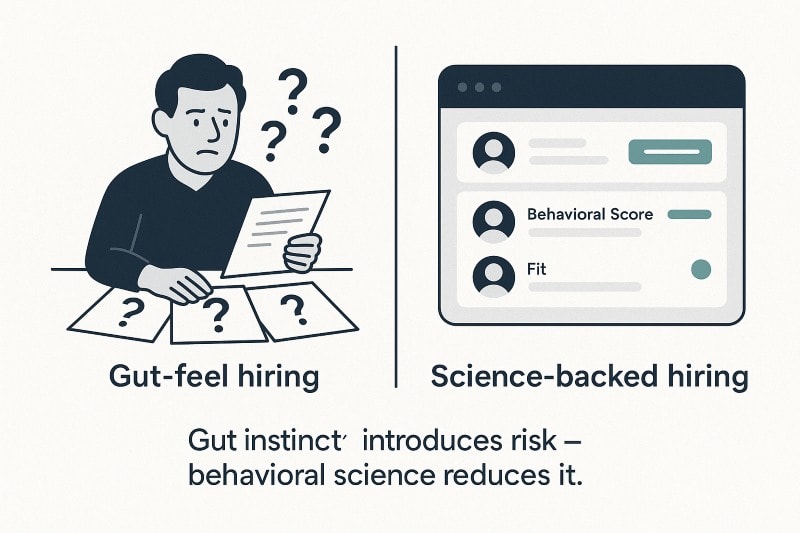
Best Hiring Software for Small Businesses in 2025
With dozens of platforms on the market, choosing the best recruiting software for a small business can feel overwhelming. To make this easier, we’ve evaluated the top tools based on the features that matter most for small teams:
- Best for: Who the software serves best (e.g., startups, fast-growing small businesses, or in-house HR teams).
- Standout features: The must-know capabilities — from job postings and applicant tracking systems (ATS) to candidate communication tools, interview scheduling, and resume parsing.
- Limitations to consider: Where the platform might fall short for small business owners.
- Trial & pricing snapshot: Whether a free trial or free tier exists, and how affordable it is for small teams.
- Ideal if you need…: A quick summary to match the tool with your hiring needs.
- OAD fit tip: A science-backed recommendation on how to integrate OAD assessments for smarter, data-driven hiring decisions.
Some platforms are specifically built for small businesses, while others are designed for staffing agencies, offering specialized tools for candidate sourcing, placement, and operational efficiency to meet the unique needs of staffing firms.
This framework ensures each review is practical and comparable, helping small business owners pick the right hiring platform for their budget, company culture, and long-term goals.
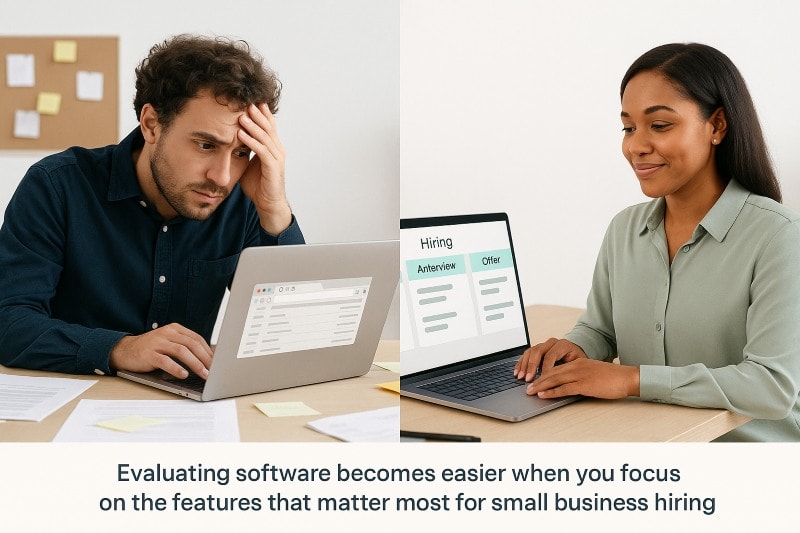
Breezy HR
Best for: Small businesses that want a user-friendly ATS with a visual pipeline, quick job board distribution, and strong candidate communication without a steep learning curve.
Standout features
- Multi-board job posting and sourcing, with resume parsing to speed up screening.
- Kanban-style pipeline with customizable stages for a clear hiring pipeline.
- Built-in email/SMS updates and interview scheduling to reduce drop-offs and back-and-forth.
Limitations to consider
- On the Bootstrap/free tier, access to older candidate records is limited (recent candidates only); upgrading unlocks broader access and advanced automation.
Trial & pricing snapshot
- Full-feature 14-day free trial; also offers entry tiers suited to small teams.
Ideal if you need…
- A user-friendly ATS to centralize job postings, candidate communications, and interview scheduling with minimal setup.
OAD fit tip
- Add OAD’s behavioral assessment link in Breezy’s stage actions (e.g., right after phone screen). Use scorecards to standardize decisions, then map OAD results to role-critical behaviors (communication, pace, problem-solving) before moving candidates to onsite.
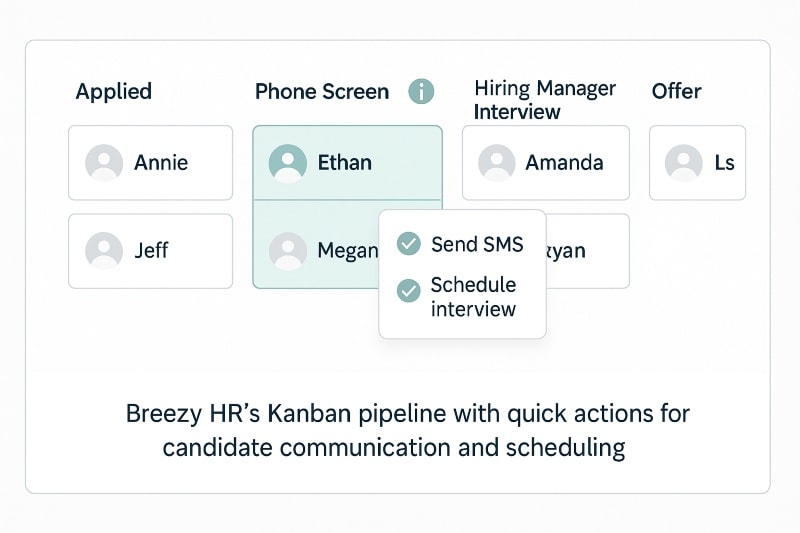
Workable
Best for: Small teams that want broad job board reach, polished careers pages, and AI-assisted recruiting in a single platform.
Standout features
- One-click posting to 200+ job boards plus multi-language options and a no-code careers page builder.
- AI-powered assistance for tasks like job description drafts, salary benchmarks, and candidate sourcing to speed up hiring efforts.
Limitations to consider
- Some advanced capabilities and add-ons are on higher tiers; confirm plan details during scoping. (See pricing page and recent breakdowns.)
Trial & pricing snapshot
- Free trial available; recent listings note ~15 days and tiered plans (Standard, Premier). Verify current terms on Workable’s pricing page.
Ideal if you need…
- Maximum reach for job ads, a branded career site, and AI helpers to reduce time-to-hire.
OAD fit tip
- Place the OAD assessment invite between screening and manager interview; combine Workable’s structured scorecards with OAD behavioral profiles to raise the hiring bar and avoid “gut-feel” decisions.
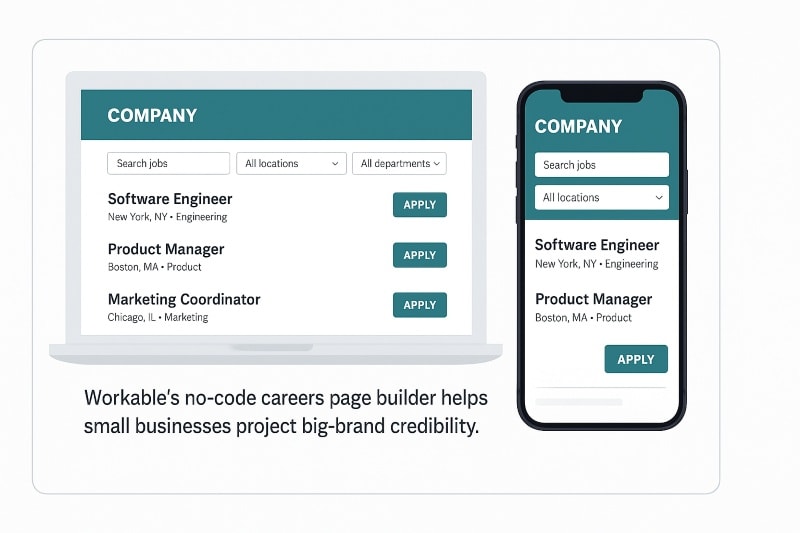
Recruitee
Best for: Growing small businesses that value collaborative hiring and want advanced tools to manage candidate pipelines as their teams expand.
Standout features
- Intuitive drag-and-drop pipeline to track candidates visually through each hiring stage.
- Collaborative hiring tools: team notes, @mentions, and candidate scorecards to align hiring managers and owners.
- Strong employer branding with customizable career pages and branded job postings.
- Integrations with job boards and HR tools for seamless workflows.
Limitations to consider
- While highly customizable, it may feel heavier than simpler ATS tools for micro-teams (under 10 people).
- Some advanced automation and reporting features require higher-tier pricing.
Trial & pricing snapshot
- Offers a free trial; pricing is transparent and scales with user count, making it flexible for small but growing teams.
Ideal if you need…
- A collaborative platform to manage multiple roles at once and keep all stakeholders aligned on candidate evaluation.
OAD fit tip
- Use Recruitee’s scorecards to benchmark candidates against OAD’s behavioral data, ensuring cultural and motivational fit isn’t lost in a fast-moving recruitment process.
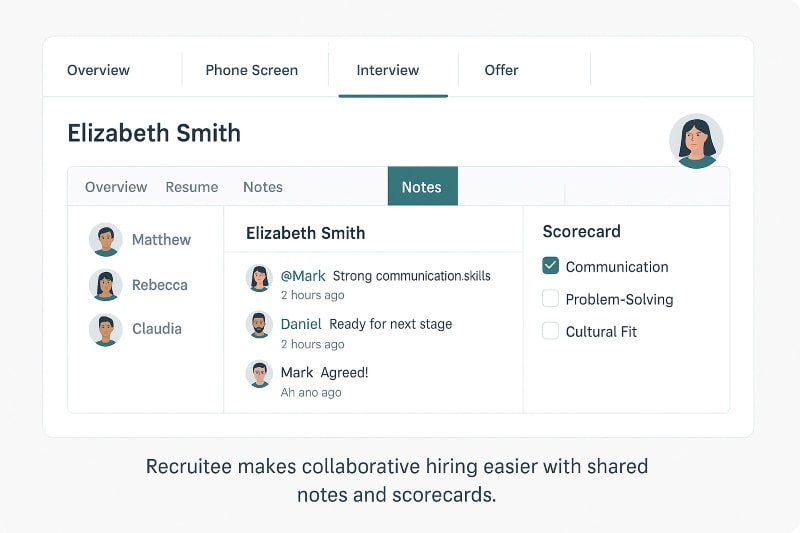
Freshteam (by Freshworks)
Best for: Small businesses looking for an all-in-one HR tool that combines hiring software with employee management features like onboarding and time-off tracking.
Standout features
- Built-in applicant tracking system with job posting to multiple boards.
- Resume parsing and candidate sourcing from referrals, job ads, and career pages.
- Integrated employee management tools: onboarding, leave tracking, and organizational charts.
- Email and candidate communication tools to streamline follow-ups.
Limitations to consider
- While strong for general HR needs, Freshteam’s ATS lacks some of the depth found in dedicated recruiting software.
- AI-powered automation is limited compared to competitors like Workable or Zoho Recruit.
Trial & pricing snapshot
- Free tier available with basic applicant tracking; paid tiers unlock more advanced HR management and automation.
Ideal if you need…
- A combined HR and recruiting platform, especially if your small business wants to manage hiring and employee records in one place.
OAD fit tip
- Pair Freshteam’s resume parsing with OAD assessments early in the process to quickly filter candidates by both hard skills and behavioral alignment.
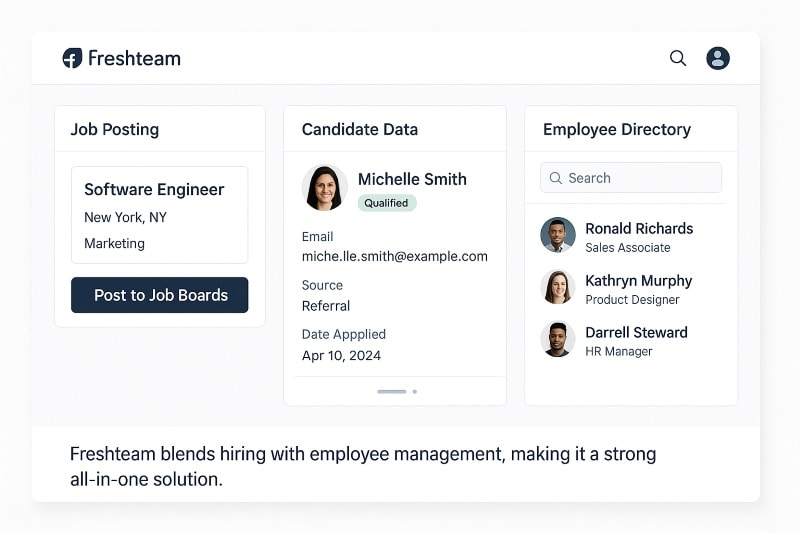
Zoho Recruit
Best for: Small businesses that want a flexible, customizable recruiting solution with strong automation and integrations into a larger HR/CRM ecosystem.
Standout features
- Robust applicant tracking system (ATS) with customizable workflows.
- AI-powered candidate matching and resume parsing to speed up sourcing.
- Seamless job board posting and branded career site creation.
- Deep integration with other Zoho apps (CRM, HR, communication tools) for small businesses already in the Zoho ecosystem.
Limitations to consider
- The platform’s flexibility can feel overwhelming for small teams that just want a plug-and-play ATS.
- Some advanced features (like AI matching) are locked to higher tiers.
Trial & pricing snapshot
- 15-day free trial available; pricing tiers scale with automation and customization needs.
Ideal if you need…
- A customizable ATS that grows with your business and integrates into a broader HR/CRM toolset.
OAD fit tip
- Layer OAD’s behavioral assessments onto Zoho’s AI matching to avoid over-reliance on keyword matches. This ensures you don’t miss candidates who align behaviorally even if their resumes don’t “look perfect.”
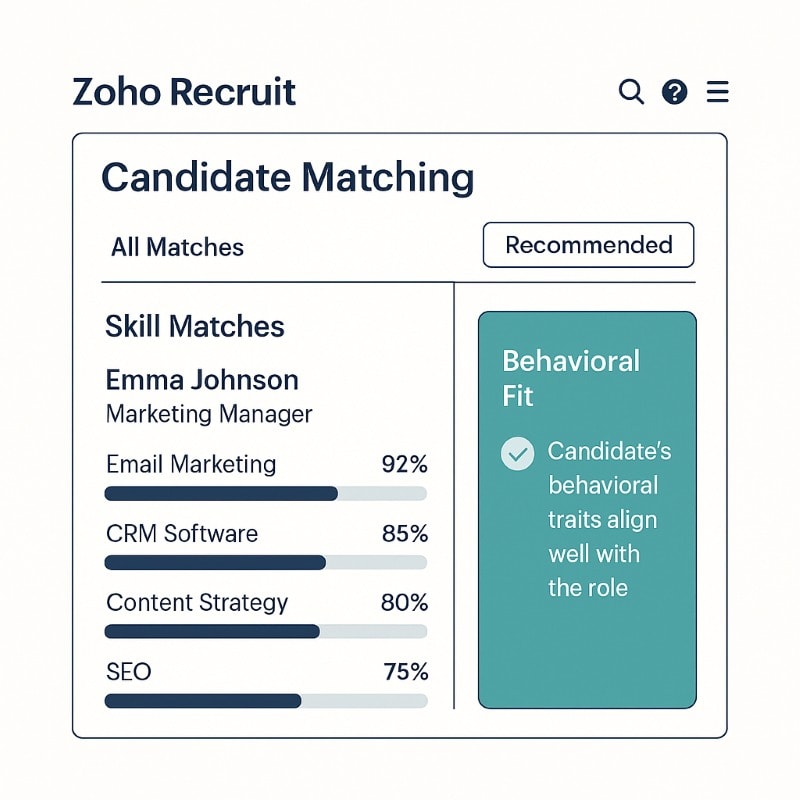
JazzHR
Best for: Budget-conscious small businesses that want affordable recruiting software with strong job posting and applicant tracking features.
Standout features
- Unlimited job postings across multiple job boards, even on lower-priced plans.
- Strong applicant tracking system (ATS) with customizable pipelines.
- Job description templates and posting tools to speed up role creation.
- Candidate collaboration tools (feedback, notes, scorecards) for small teams.
Limitations to consider
- Lacks some advanced automation and AI features found in higher-end platforms.
- No built-in employee management or HR suite (focuses purely on recruiting).
Trial & pricing snapshot
- Free trial available; entry plans start at a lower monthly cost than many competitors, making it one of the most affordable ATS options.
Ideal if you need…
- A cost-effective platform to manage job postings and applications without unnecessary extras.
OAD fit tip
- Use JazzHR’s custom workflows to trigger OAD assessments automatically after resume parsing, so hiring managers can combine behavioral insights with structured scorecards before interviews.
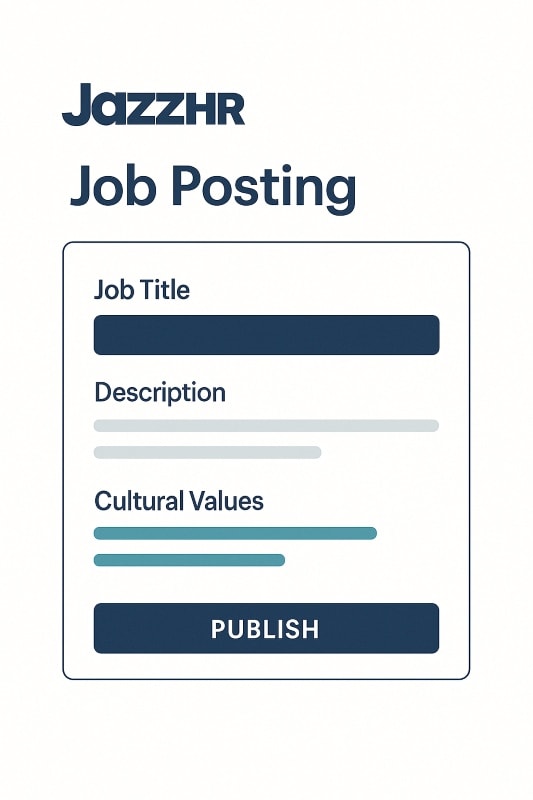
Other Noteworthy Tools
While we focused on six of the most widely adopted solutions for small businesses, there are several other hiring platforms worth considering depending on your industry and budget. Lever offers a strong balance of ATS and CRM capabilities, especially for companies that want to nurture a talent pool. Some solutions are also well-suited for staffing companies seeking specialized recruitment features to streamline their hiring processes. BambooHR provides recruiting features alongside broader HR management tools, making it a good fit if you want hiring and employee data in one system. Manatal has gained traction with its AI-powered candidate sourcing and affordability for small teams. Meanwhile, Betterteam keeps things simple with easy job ad distribution, ideal for micro-businesses that just need quick visibility.
The right platform depends on whether you’re prioritizing affordability, depth of features, or integration with existing HR systems.
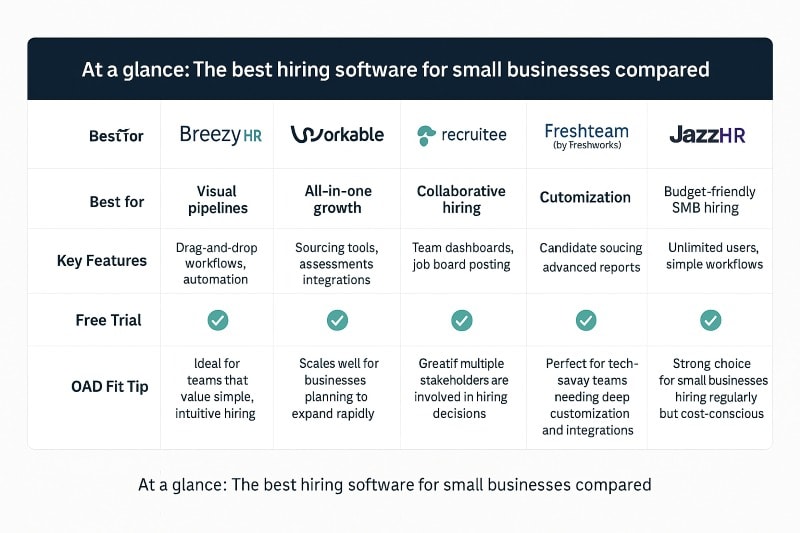
Choosing the Right Fit
With so many recruiting software options available, the question isn’t if you need hiring software — it’s which one aligns with your team’s goals. A small business that values culture and collaboration may benefit from Recruitee, while a cost-sensitive startup might prefer JazzHR’s budget-friendly tiers. The key is to match the tool not only to your hiring needs but also to your company culture and long-term growth strategy.
And this is where the real work begins: integrating your chosen platform into a hiring process that scales.
Integrating Hiring Software into Your Recruitment Process
Buying the right software is only half the battle. The real value comes when small businesses weave those tools into a consistent hiring process — one that saves time, improves candidate experience, and ensures better decisions at every stage.
Building a Hiring Pipeline
Think of your hiring process as a pipeline: job opening → job ad → application → screening → interviews → offer. Hiring software gives structure to each stage, ensuring candidates move smoothly without falling through the cracks. An ATS can automatically flag resumes, trigger interview scheduling, and provide visibility across the pipeline so hiring managers always know where each candidate stands.
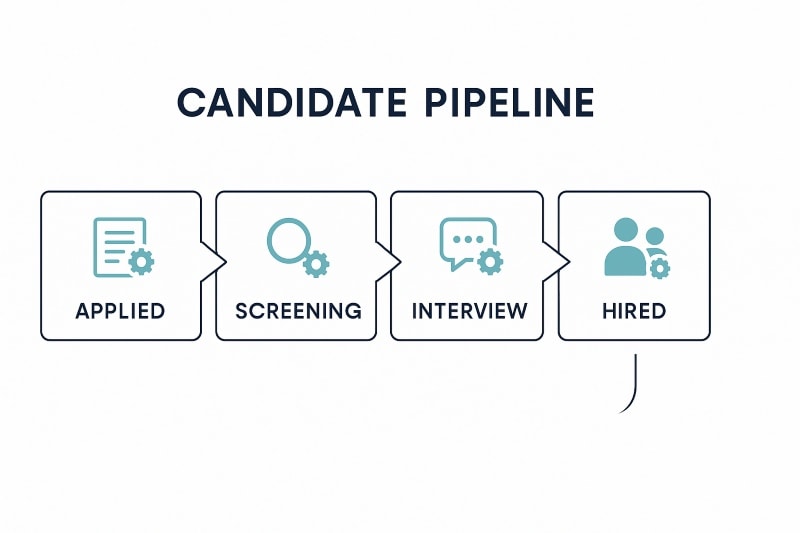
Collaborative Hiring for Small Teams
When only a handful of people are making the hiring decision, collaboration becomes even more critical. Modern recruitment software allows hiring managers, owners, and even team members to leave notes, score candidates, and vote on cultural fit — all within the platform. This eliminates the back-and-forth of emails and ensures the decision isn’t based on one person’s perspective alone.
Candidate Relationship Management
Big companies build talent pipelines that they can revisit when roles open up. Small businesses can — and should — do the same. Recruitment software lets you store candidate data, tag profiles for future roles, and keep communication warm. Instead of scrambling every time a new role appears, small business owners can tap into an existing talent pool. Over time, this builds an advantage: you’re hiring from people who already know your brand.
Agency Recruiters vs. In-House Recruitment Teams
For some small businesses, recruitment agencies feel like the faster route. But agencies can be costly and may not always capture company culture the way an in-house team can. Hiring software levels the playing field by giving small teams access to tools agencies traditionally used — automated sourcing, resume parsing, interview scheduling, and candidate communications. With the right platform, even a business with no dedicated HR staff can run a professional, scalable hiring process.
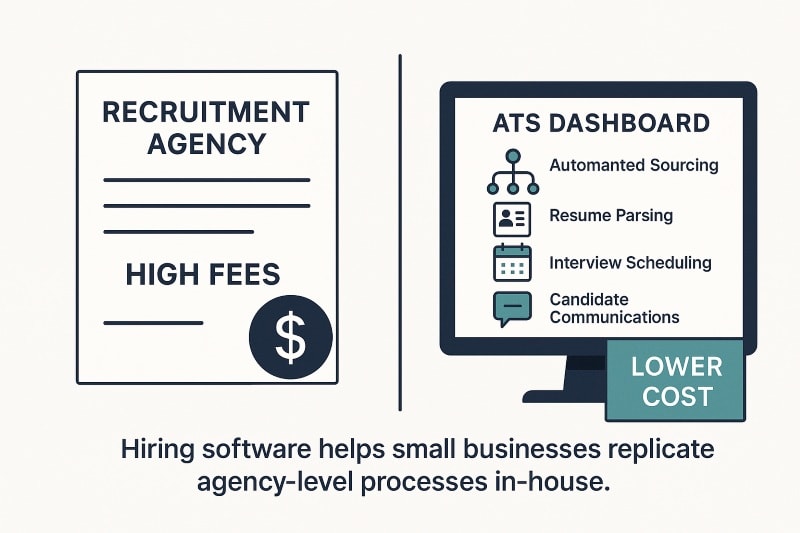
How to Match Software with Your Hiring Needs
Not all small businesses hire the same way. A retail shop with seasonal turnover has very different needs than a tech startup looking for engineers. The best hiring software isn’t just the most popular — it’s the one that matches your size, industry, and company culture. Choosing the right platform also supports effective talent acquisition strategies, helping you source, nurture, and manage candidates to attract the best talent.
Small Business Owners vs. HR Teams
In very small companies, the owner often doubles as the recruiter. For them, hiring software needs to be lightweight, intuitive, and cost-effective — ideally with job posting, applicant tracking, and scheduling tools in one place.
Once a business reaches 50+ employees, an HR team typically enters the picture. At that stage, hiring platforms should support collaborative hiring, recruitment metrics, and talent relationship management. The difference isn’t just scale — it’s the level of structure required.
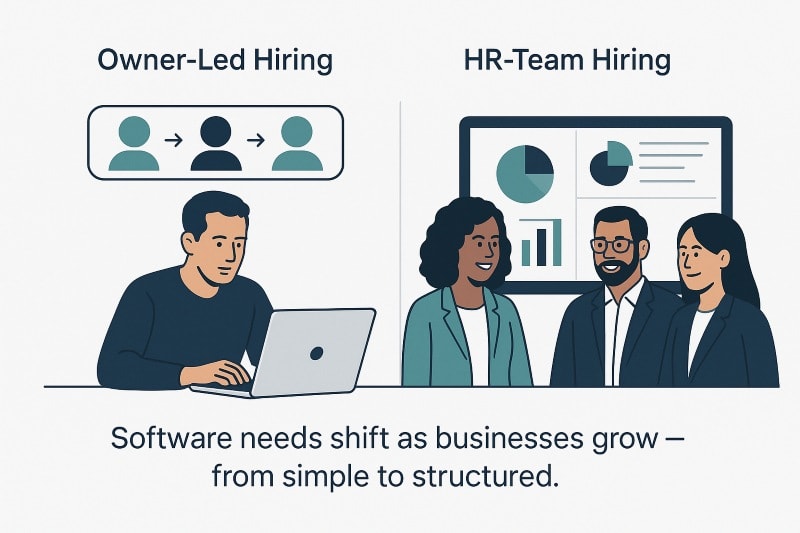
Industry-Specific Hiring Needs
- Retail and hospitality: High-volume hiring with frequent turnover. Software that integrates with job boards and supports resume parsing at scale is critical.
- Tech startups: Niche skills and culture fit are top priorities. Tools with AI-powered sourcing and customizable evaluation scorecards make a difference.
- Professional services (law, finance, consulting): These firms value long-term retention and cultural alignment. Career page branding and candidate communication tools are essential for employer reputation.
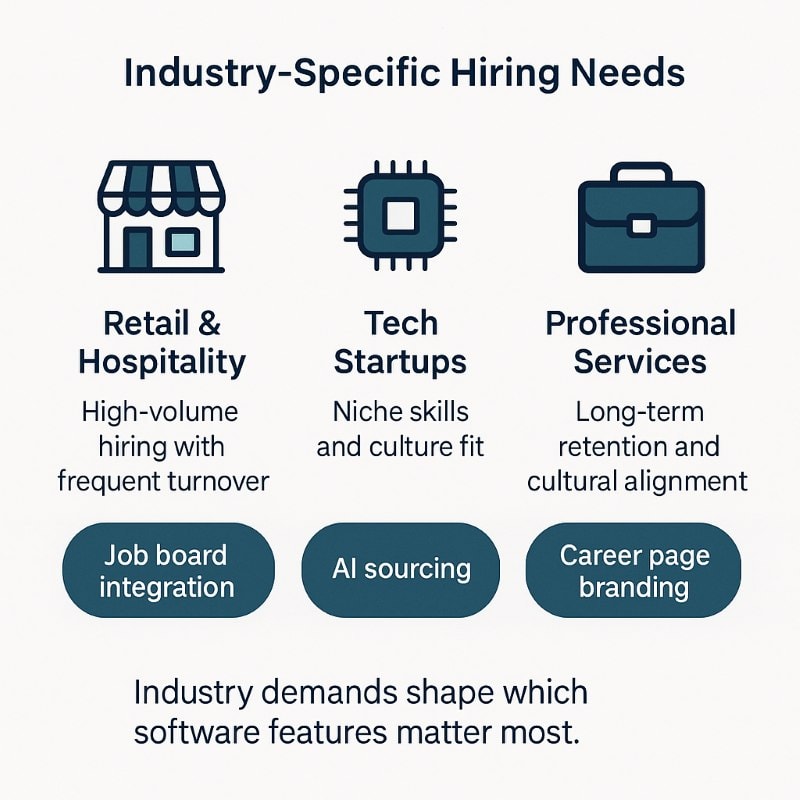
Aligning Software with Company Culture
Hiring isn’t just about skills. The right software helps small businesses project company culture through branded career pages, consistent job descriptions, and thoughtful candidate communication.
For example: a fast-moving startup may want software that emphasizes speed and automation. A family-owned business, by contrast, might prioritize personalized candidate interactions and collaborative team input. Matching the platform to your cultural DNA ensures new hires stick — not just for months, but for years.
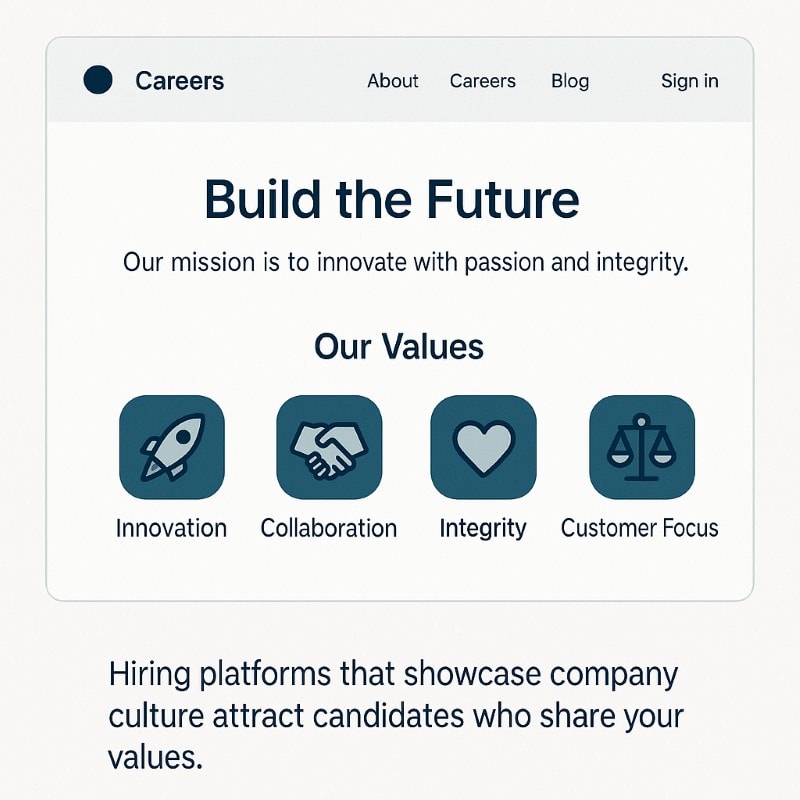
Best Practices for Using Hiring Software Effectively
Recruitment isn’t simply about filling today’s open role — it’s about shaping the future of your business. For small companies, where every hire has an outsized impact, following proven best practices can mean the difference between building a high-performing team and struggling with costly turnover.
Start with clear, well-structured job descriptions that highlight not just responsibilities, but also the cultural values that set your business apart. Use your ATS or hiring software to maintain consistent communication with candidates, since research shows that lack of feedback is one of the top reasons candidates drop out of the process. Finally, think beyond the hire: effective onboarding is critical to long-term success, helping new employees ramp up quickly and stay engaged.
When combined with the right recruitment software, these practices ensure small businesses don’t just attract applicants — they secure the top talent who will grow with them.
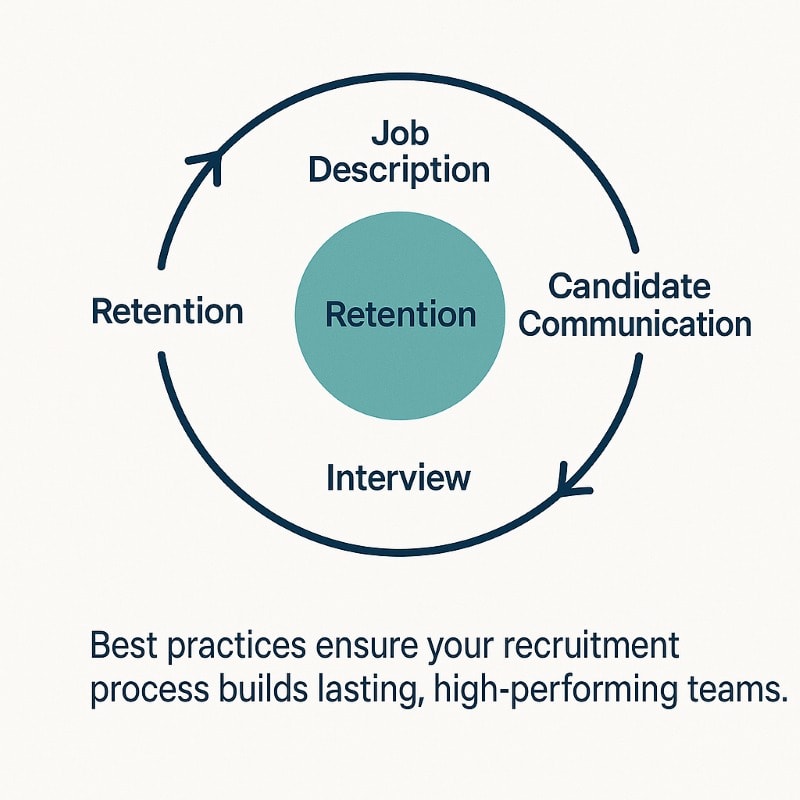
Onboarding for Long-Term Success
The recruitment process doesn’t end when a candidate signs an offer — that’s just the beginning. Onboarding is where new hires transition from applicants to engaged contributors, and it’s one of the strongest predictors of retention. Research from SHRM shows that effective onboarding programs can improve new hire retention by 82% and productivity by 70%.
A strong onboarding program should include:
- Welcoming orientation to introduce new hires to the company, team, and values.
- Role-specific training that equips them with the tools and knowledge needed for success.
- Regular check-ins during the first 90 days to support engagement and address challenges early.
HR software and recruitment tools help streamline onboarding by automating paperwork, tracking training completion, and sending reminders. More importantly, they ensure consistency — every new hire receives the same structured, professional introduction to the business.
When paired with strategies like employee referrals and mentorship, onboarding creates a built-in support network that accelerates integration and strengthens culture. For small businesses, this isn’t just about efficiency — it’s about giving new hires a reason to stay and grow with you.
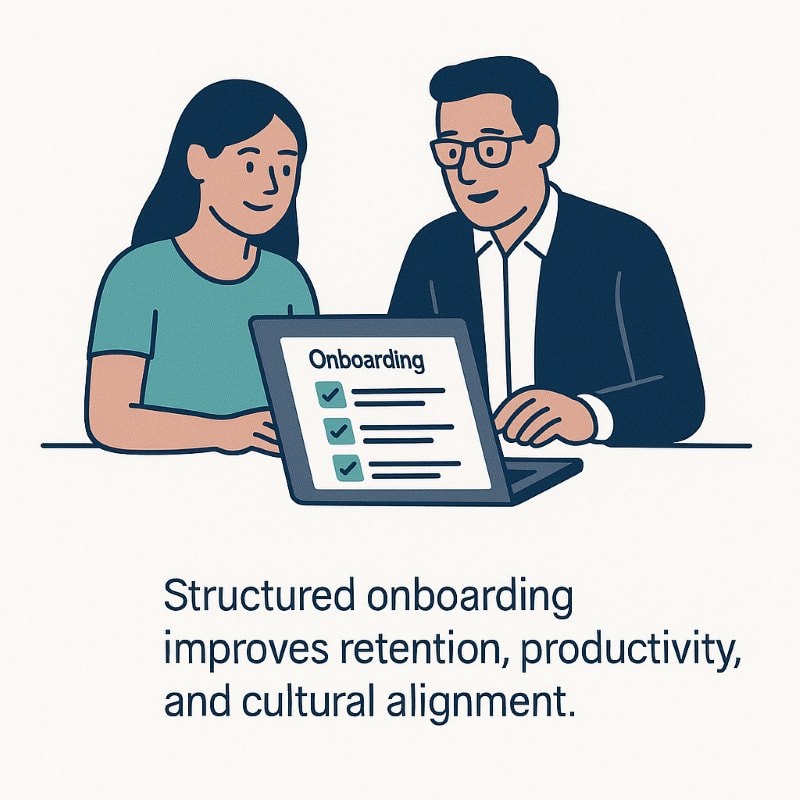
Ensuring Fair and Inclusive Hiring
Diversity isn’t just a buzzword — it’s a proven business advantage. McKinsey research has shown that companies in the top quartile for diversity are 36% more likely to outperform peers in profitability. For small businesses, ensuring fair and inclusive hiring practices isn’t about compliance alone; it’s about building stronger, more innovative teams.
Recruitment software can play a key role in reducing bias and leveling the playing field:
- Objective filters: Automatically screen for required skills or certifications instead of subjective criteria.
- Blind hiring features: Remove names and identifying information from resumes to reduce unconscious bias.
- Structured evaluations: Use standardized interview scorecards so every candidate is judged against the same criteria.
In addition, tracking recruitment metrics (like source of hire, pass-through rates, or diversity ratios) helps small businesses spot patterns and address potential gaps. Pairing these tools with regular training on inclusive hiring ensures that every candidate is evaluated consistently and fairly.
By embedding fairness into your process, you don’t just attract a wider talent pool — you also signal to top candidates that your business values equity, respect, and long-term success.
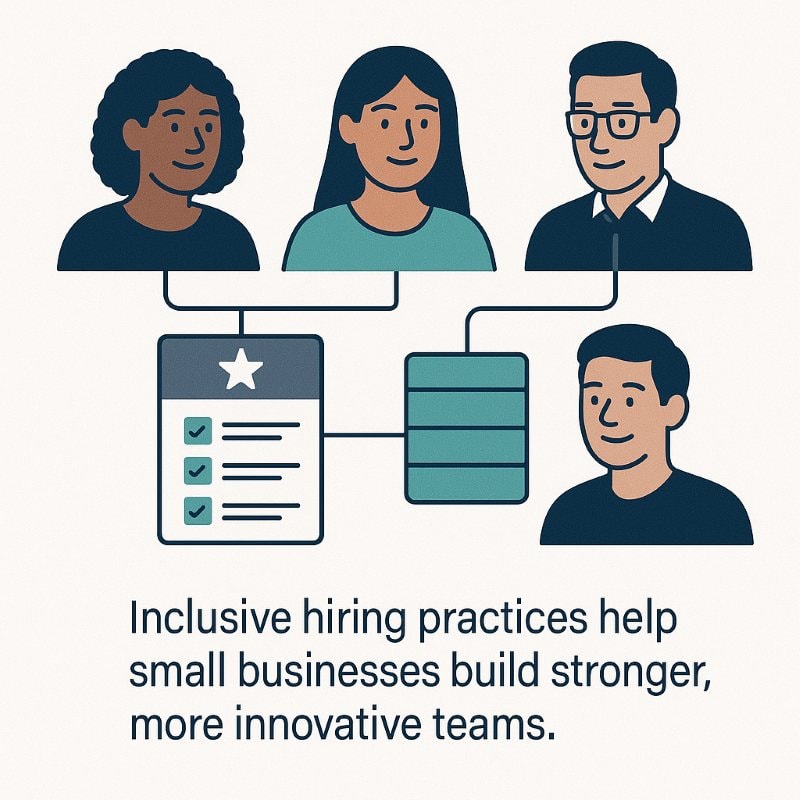
Crafting Clear Job Descriptions
A job description is more than a posting — it’s a signal to the market about who you are as a company. For small businesses competing with larger employers, clarity and authenticity are what help your role stand out. Research from LinkedIn shows that clarity around responsibilities and career growth is one of the top three factors candidates look for before applying.
To create effective job descriptions, focus on both precision and culture:
- Use a clear, searchable job title that matches what candidates type into job boards.
- Write a concise job summary that explains why the role exists and how it contributes to business success.
- List key responsibilities and daily tasks so candidates know exactly what success looks like.
- Highlight required skills and qualifications, but avoid overloading with “nice-to-haves” that may discourage strong candidates from applying.
- Showcase company culture and values, giving a sense of what it’s like to work with your team.
- Provide a salary range and benefits to set expectations and demonstrate transparency.
Most hiring software includes job description templates, helping small businesses maintain consistency across multiple postings and career pages. Beyond saving time, this also strengthens your employer brand by ensuring every role reflects the same professional standard.
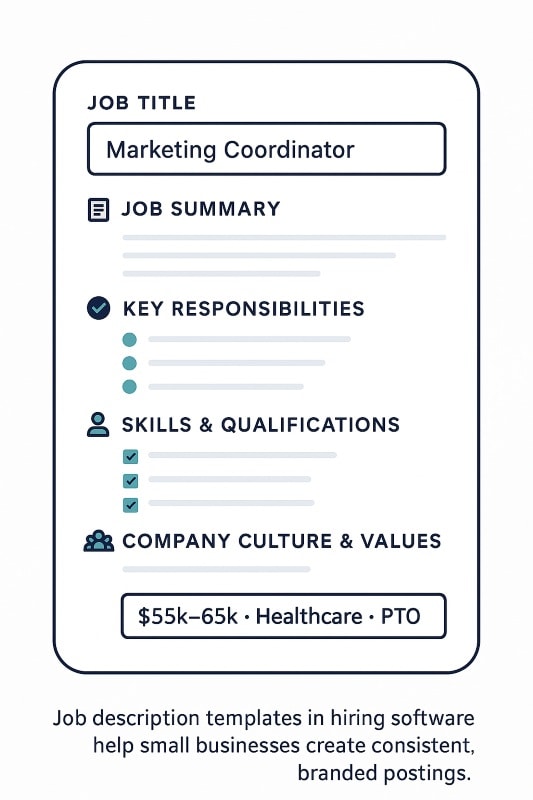
Structuring the Interview Process
Interviews are often the most influential part of hiring — but without structure, they’re also the most unreliable. In fact, research published in Harvard Business Review found that unstructured interviews are among the weakest predictors of job performance. A consistent process ensures candidates are evaluated fairly and that hiring decisions are based on evidence, not intuition.
An effective small-business interview framework includes:
- Initial screening (often by phone or video) to confirm baseline qualifications and interest.
- In-depth interviews to evaluate technical expertise and prior experience.
- Behavioral interviews to understand how candidates handle challenges, teamwork, and decision-making — critical for cultural fit.
- Final round with the hiring manager and key team members to align perspectives and secure buy-in before making an offer.
Modern hiring software helps streamline this process by integrating candidate communication tools: automated scheduling, interview reminders, and status updates. This not only saves time for busy managers but also demonstrates professionalism and respect for candidates — key elements of a strong employer brand.
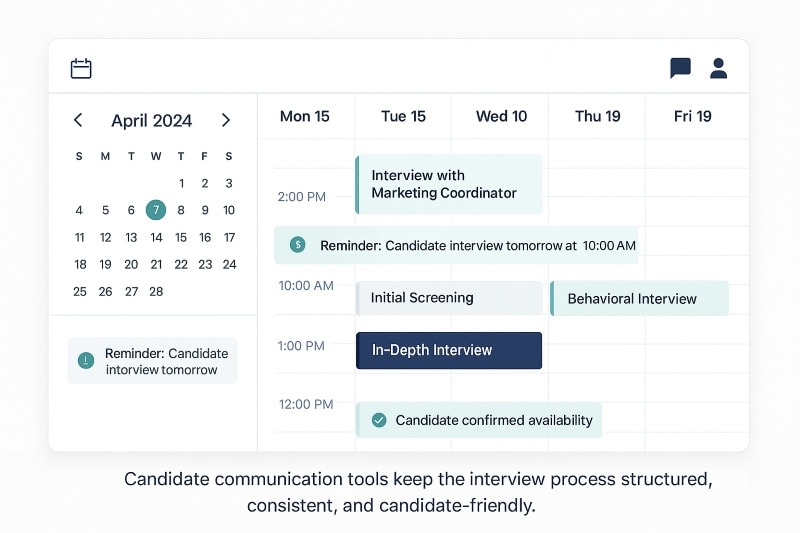
Advanced HR Tech Trends for Small Businesses
The world of HR technology is moving fast. Features that once seemed out of reach for small teams — like AI-powered candidate matching or automated interview scheduling — are now built into affordable recruitment software. Staying ahead of these trends isn’t just about using flashy tools; it’s about giving small businesses the same competitive edge as larger organizations.
AI-Powered Recruiting Solutions
Artificial intelligence is reshaping how candidates are sourced and evaluated. Many platforms now use AI to:
- Parse resumes and automatically highlight relevant skills.
- Suggest edits to job descriptions to attract top talent.
- Match candidates to open roles based on keywords, experience, and even cultural signals.
For small businesses, this means less time lost in manual screening and more focus on interviewing the right people.
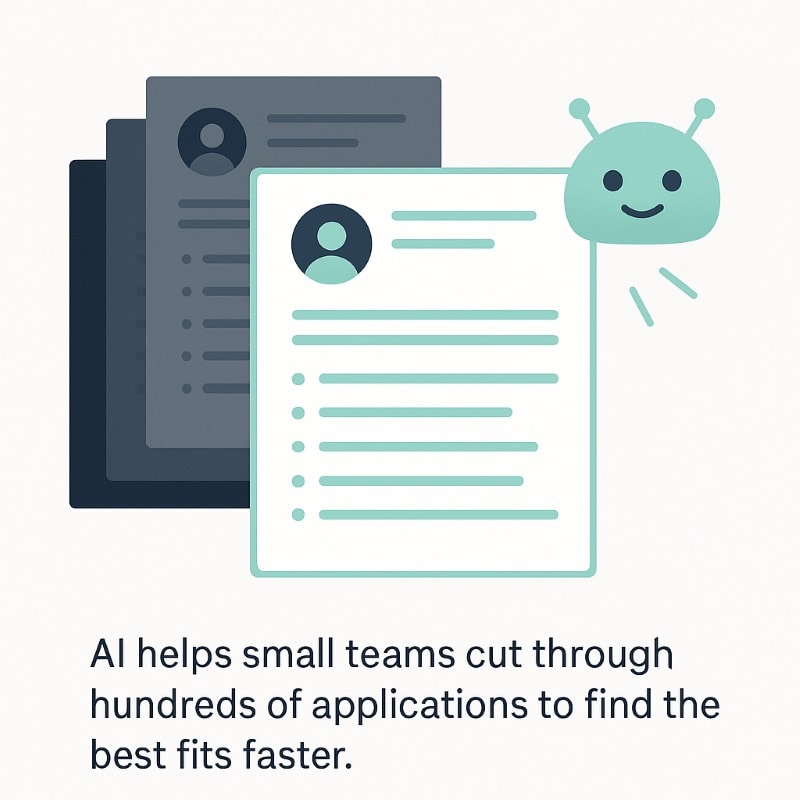
Automating Candidate Disqualification
One of the biggest drains on small hiring teams is reviewing unqualified applicants. Advanced hiring platforms now let you set filters to automatically disqualify candidates who don’t meet key requirements — whether it’s years of experience, location, or certifications.
This automation ensures small businesses spend less time on “no-fit” resumes and more time building relationships with qualified candidates.
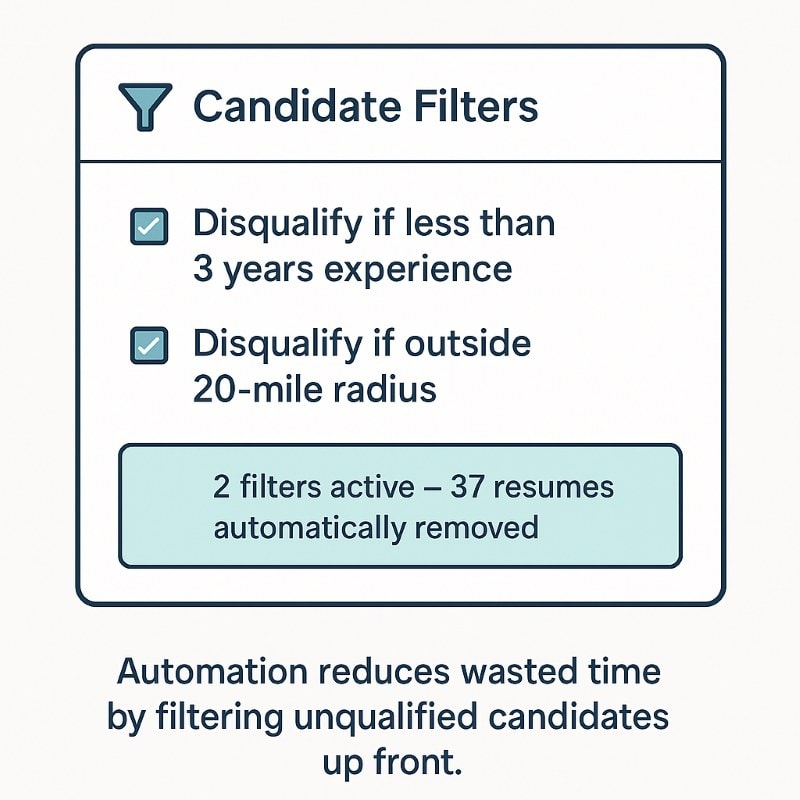
Using Recruitment Metrics to Improve Time-to-Hire
Data once reserved for enterprise HR teams is now available to small businesses. Hiring software can track:
- Time-to-hire: How long it takes to fill a role.
- Source of hire: Which job boards or referrals produce the best candidates.
- Candidate experience: Drop-off points in the pipeline where applicants disengage.
By monitoring these metrics, small businesses can spot bottlenecks and make informed improvements. For example, if drop-off rates spike after the first interview, it may be a sign that communication tools or scheduling workflows need adjustment.
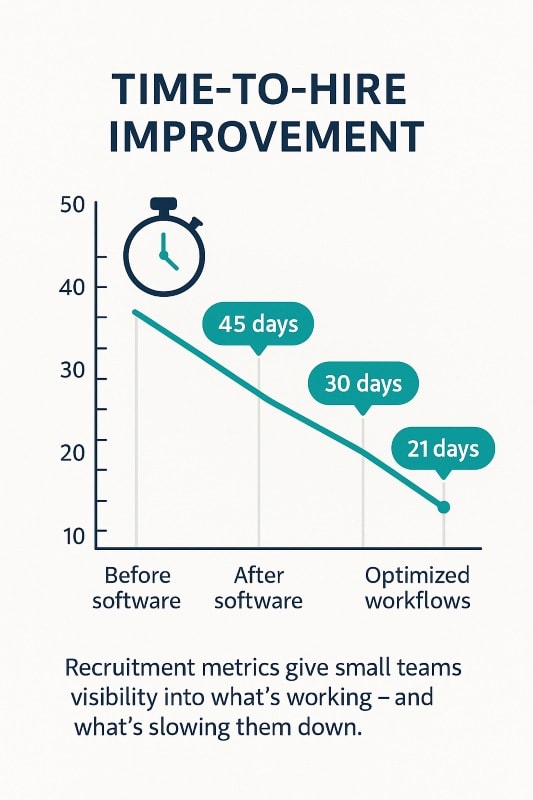
Case Study: Scaling Hiring with Science
The Challenge:
BrightBrew Coffee, a fast-growing regional coffee chain with 80 employees, faced a common small business challenge: inconsistent hiring. Store managers relied on gut feel when screening candidates, leading to high turnover and uneven customer experiences. The leadership team needed a way to hire faster while building a more reliable culture fit.
The Solution:
BrightBrew adopted Breezy HR to centralize their hiring pipeline — distributing job ads, parsing resumes, and scheduling interviews automatically. But instead of relying solely on resumes and interviews, they paired Breezy with OAD’s behavioral assessments. Each candidate completed a short assessment after the phone screen, giving hiring managers objective data on traits like communication style, problem-solving, and pace.
The Results:
- Turnover dropped by 28% within the first year, as new hires better matched the company’s fast-paced, customer-first culture.
- Time-to-hire decreased by 35%, as automation eliminated back-and-forth scheduling and unqualified resumes were filtered out early.
- Managers reported feeling “more confident” in decisions, with one noting: “The data backed up what my gut told me — or corrected me when I was off.”
By combining recruitment software with science-backed insights, BrightBrew didn’t just hire faster — it hired smarter.
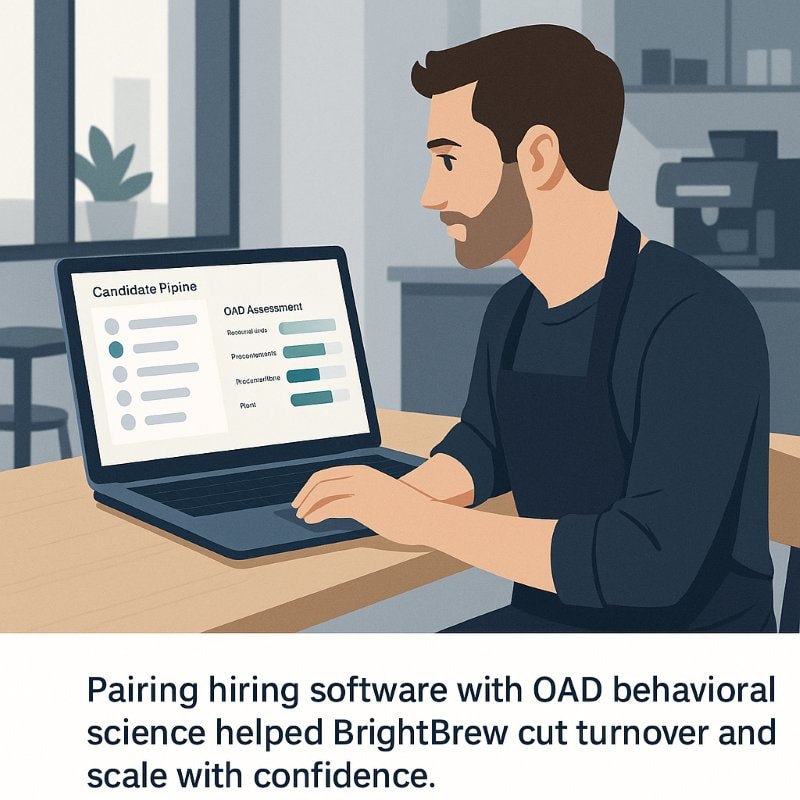
How OAD Strengthens Small Business Hiring
Hiring software helps small businesses move faster. But speed without accuracy creates risk — especially for lean teams where one bad hire can have an outsized impact. This is where OAD’s behavioral science assessments transform recruitment from a process into a competitive advantage.
Turning Gut Feel Into Data
Most small business hiring decisions still lean heavily on interviews and intuition. Research from Harvard Business Review shows that unstructured interviews are among the least reliable predictors of job success. OAD replaces “gut feel” with data-driven insights into a candidate’s communication style, decision-making approach, and motivational drivers.
Seamless Integration With ATS Platforms
OAD fits directly into the workflows of top ATS systems like Breezy HR, Workable, and Recruitee. Candidates can be automatically invited to complete assessments at key pipeline stages — meaning managers get clear, actionable data without adding extra steps.
Aligning Hires With Company Culture
Small businesses thrive on culture fit. OAD maps candidate behavioral profiles against your existing top performers and cultural benchmarks, giving hiring teams a science-backed way to spot who will thrive in your environment. Instead of just asking “Can they do the job?” OAD helps answer “Will they succeed here?”
Long-Term Value Beyond Hiring
Unlike a resume or interview score, OAD data continues to provide value long after the hire. Managers can use the same insights for onboarding, coaching, and employee development. This makes OAD not just a hiring solution, but a talent management solution for growing small businesses.
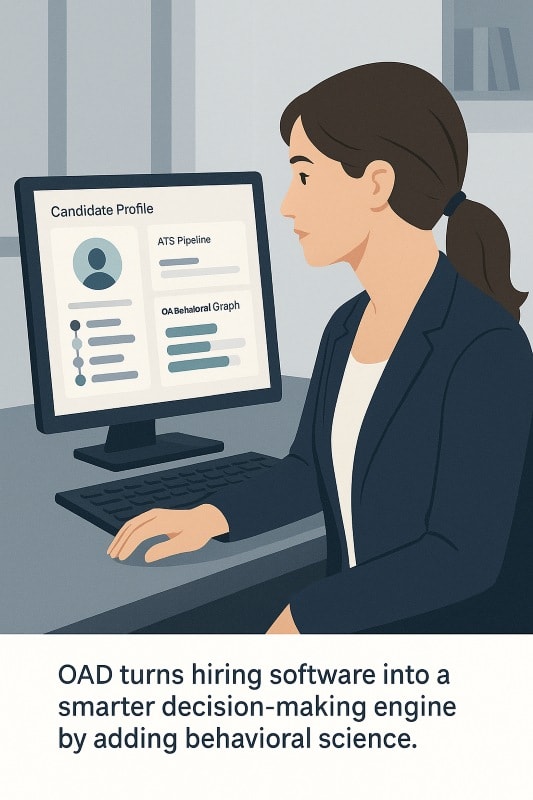
Conclusion: Hire Smarter, Not Just Faster
For small businesses, every new hire matters. The right hiring software helps streamline job postings, track applicants, and improve collaboration — but the true advantage comes when technology is paired with science. By integrating behavioral insights from OAD, small business owners can move beyond guesswork to make confident, data-driven hiring decisions that reduce turnover and strengthen company culture.
In today’s competitive talent market, hiring isn’t just about filling seats. It’s about building teams that fuel growth, embody your values, and stay for the long run. With the right mix of tools and science, even the leanest hiring teams can compete like the big players.
Ready to See OAD in Action?
Don’t just hire faster — hire smarter. Test OAD for free today and see how behavioral science can supercharge your hiring software and give your small business a measurable edge.
